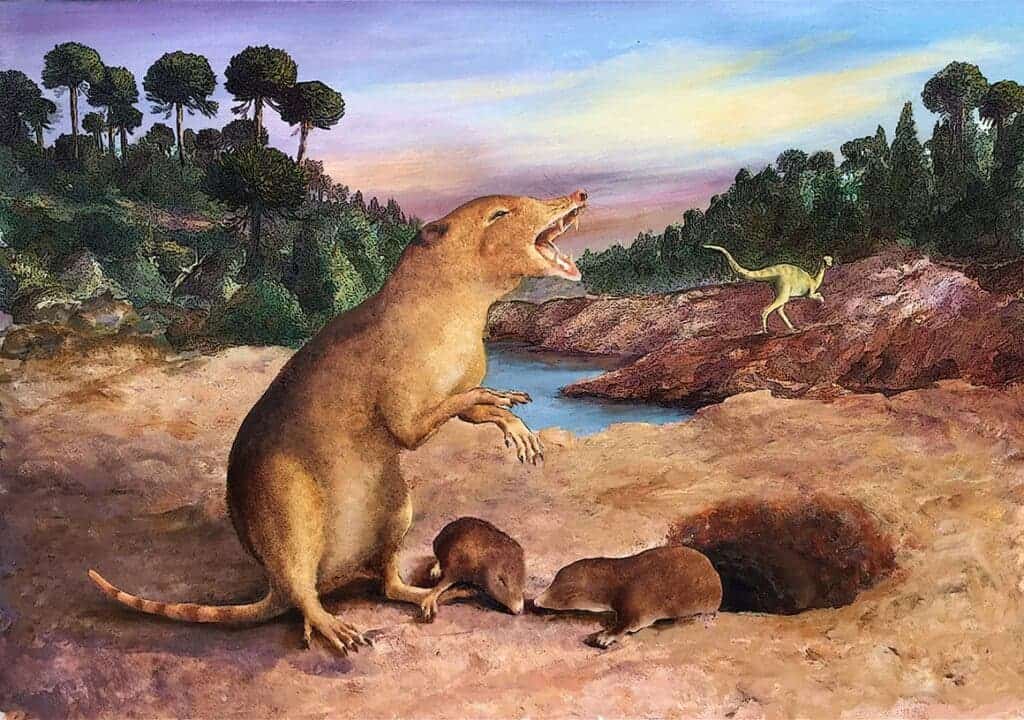Researchers report discovering what is, currently, the oldest mammal ever discovered.

Wherever life may take us, it is important to remember where we come from. And where we come from, according to new research, seems to be the shrew-like Brasilodon quadrangularis. This modest-sized animal (it could grow to around 12 cm in length, according to our estimations) is the oldest-known mammal to date, and it was described from a set of fossil dental records discovered in Late Triassic outcrops in Rio Grande do Sul, Brazil.
The rocks that contained these fossils formed during the latter days of the dinosaurs (during the Late Triassic) some 225 million years ago, roughly 25 million years after the Permian-Triassic mass extinction, the single most dramatic extinction event in Earth’s known history.
Earliest mammal
“Comparative studies with recent mammal dentitions and tooth replacement modes suggest that this was a placental, relatively short-lived animal,” explains Dr. Martha Richter, Scientific Associate at the History Museum in London King’s College London and senior author of the paper.
“Dated at 225.42 million years old, this is the oldest known mammal in the fossil record contributing to our understanding of the ecological landscape of this period and the evolution of modern mammals.”
The current paper is the product of a collaboration between researchers at the Museum and the Federal University of Rio Grande do Sul in Porto Alegre, Brasil.
The discovery pushes back the age of the oldest-known mammal by around 20 million years. Up to now, the oldest-known mammal was a species known as Morganucodon, which is around 205 million years old.
Brasilodon, the newly-described mammal, is the oldest known extinct vertebrate species sporting two successive sets of teeth, one of which served as replacement; this trait is known as diphyodonty. Humans, too, are diphyodont animals. Reptiles employ a different mechanism called poliphydonty, in which their teeth are regenerated multiple times during their lives.
Diphyodonty is a tell-tale trait of mammals, and has been linked to endothermy (warm-bloodedness), fur, and live birth. The development of this secondary set of teeth involves long-lasting and age-controlled changes to the anatomy of an animal’s skull, such as the closure of the roof of the mouth, which allow younglings to breathe while suckling.
Many of the traits that help define mammals — the presence of fur or specific milk-producing glands — only very rarely fossilize. In the case of the current species, none of these could be recovered. However, the team could draw on the fact that Brasilodon was a diphyodont to establish that it was a mammal rather than a reptile species, despite the comparative lack of other body structures.
“The evidence from how the dentition was built over developmental time is crucial and definitive to show that Brasilodons were mammals,” explains Prof Moya Meredith Smith, contributing author and Emeritus Professor of Evolution and Development of Dentoskeletal Anatomy at King’s College London.
“Our paper raises the level of debate about what defines a mammal and shows that it was a much earlier time of origin in the fossil record than previously known.”
Based on its probable size and its choice of neighbourhood, Basilodon most likely led a lifestyle similar to today’s shrews. It lived at a time when the world was brimming with reptiles and many of the first dinosaur species were evolving, and as such, likely spent a large part of the day taking shelter in burrows and going out at night to get food.
The paper “Diphyodont tooth replacement of Brasilodon – a Late Triassic eucynodont that 2 challenges the time of origin of mammals” has been published in the Journal of Anatomy.


